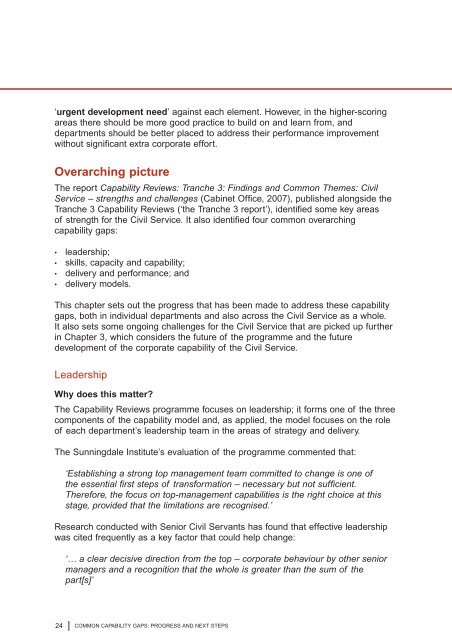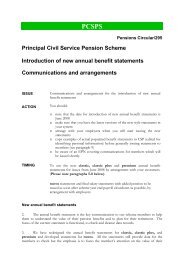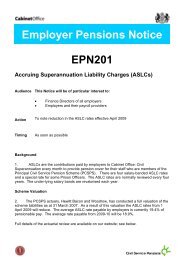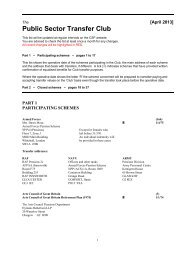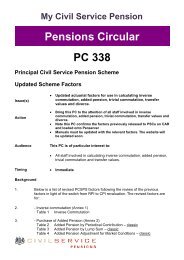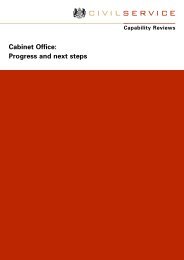Capability Reviews: Progress and Next Steps - The Civil Service
Capability Reviews: Progress and Next Steps - The Civil Service
Capability Reviews: Progress and Next Steps - The Civil Service
- No tags were found...
You also want an ePaper? Increase the reach of your titles
YUMPU automatically turns print PDFs into web optimized ePapers that Google loves.
‘urgent development need’ against each element. However, in the higher-scoringareas there should be more good practice to build on <strong>and</strong> learn from, <strong>and</strong>departments should be better placed to address their performance improvementwithout significant extra corporate effort.Overarching picture<strong>The</strong> report <strong>Capability</strong> <strong>Reviews</strong>: Tranche 3: Findings <strong>and</strong> Common <strong>The</strong>mes: <strong>Civil</strong><strong>Service</strong> – strengths <strong>and</strong> challenges (Cabinet Office, 2007), published alongside theTranche 3 <strong>Capability</strong> <strong>Reviews</strong> (‘the Tranche 3 report’), identified some key areasof strength for the <strong>Civil</strong> <strong>Service</strong>. It also identified four common overarchingcapability gaps:• leadership;• skills, capacity <strong>and</strong> capability;• delivery <strong>and</strong> performance; <strong>and</strong>• delivery models.This chapter sets out the progress that has been made to address these capabilitygaps, both in individual departments <strong>and</strong> also across the <strong>Civil</strong> <strong>Service</strong> as a whole.It also sets some ongoing challenges for the <strong>Civil</strong> <strong>Service</strong> that are picked up furtherin Chapter 3, which considers the future of the programme <strong>and</strong> the futuredevelopment of the corporate capability of the <strong>Civil</strong> <strong>Service</strong>.LeadershipWhy does this matter?<strong>The</strong> <strong>Capability</strong> <strong>Reviews</strong> programme focuses on leadership; it forms one of the threecomponents of the capability model <strong>and</strong>, as applied, the model focuses on the roleof each department’s leadership team in the areas of strategy <strong>and</strong> delivery.<strong>The</strong> Sunningdale Institute’s evaluation of the programme commented that:‘Establishing a strong top management team committed to change is one ofthe essential first steps of transformation – necessary but not sufficient.<strong>The</strong>refore, the focus on top-management capabilities is the right choice at thisstage, provided that the limitations are recognised.’Research conducted with Senior <strong>Civil</strong> Servants has found that effective leadershipwas cited frequently as a key factor that could help change:‘… a clear decisive direction from the top – corporate behaviour by other seniormanagers <strong>and</strong> a recognition that the whole is greater than the sum of thepart[s]’24COMMON CAPABILITY GAPS: PROGRESS AND NEXT STEPS


